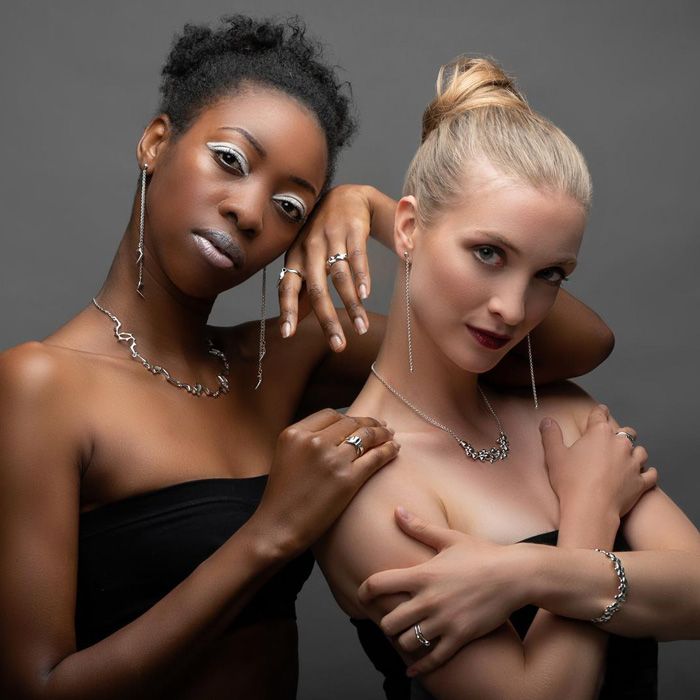Diamond is the hardest known mineral on earth, 58 times harder than anything else in nature. Formed over a billion years ago deep within the earth’s mantle under high temperature and pressure, diamond is the only gem composed of one single element: carbon.
The name diamond derives from the ancient Greek adamas, which means “invincible”. Because a diamond can only be scratched by other diamonds, allowing it to hold a polish extremely well and retain its lustre, it is well-suited to daily wear. Its resistance to scratching makes a diamond the ideal choice for engagement and wedding rings.
Diamonds exist in various colours such as white (transparent), green, grey, pink, blue, black, red, purple but they are more commonly brown or yellow. The values of white (transparent) diamonds are assessed using the 4C’s method, while the classification of coloured diamonds (also called fancy colour) follows other specific rules.
The four C's
To value a white (transparent) diamond, professionals use an internationally recognised grading system, which takes in consideration 4 factors, the cut, carat, colour and clarity of the stone – known as the 4Cs. These are used in combination when assessing the quality of a finished diamond.
CUT:
The brilliance of a diamond is determined by the precision with which it is cut. The cut refers to the shape of the diamond but is graded on how well proportioned (how well cut) the stone is.
Precise craftsmanship and skills are required to fashion a stone so its proportions, symmetry, and polish deliver the magnificent return of light only possible in a diamond.
Perfect proportions allow light to reflect internally and disperse through the top of the diamond, giving it that unmistakable sparkle. The round brilliant cut is the most popular shape and is designed for maximum sparkle. Other cuts will play with the light differently.


COLOUR:
Diamond colour is graded on a colour scale ranging from D (colourless) to Z (tinted) using the GIA (The Gemmological Institute of America) international colour grading scale as reference. The closer a diamond is to colourless, the rarer and more valuable it is.
Coloured diamonds are those which have a strong, even colour such as yellow, pink or blue. They are extremely rare and referred to as “fancy colour” diamonds. Other more readily available natural diamonds such as Salt and Pepper, Cognac or Champagne diamonds, are growing in popularity and are a great alternative to the classic white diamond.

CLARITY:
The natural process in which diamonds are formed means characteristics called inclusions (internal features) and surface irregularities (blemishes) are present within the stone. Clarity is the relative absence of inclusions and blemishes.
It is extremely rare to find a perfectly clear diamond therefore most have tiny inclusions otherwise referred to as nature’s fingerprints. Clarity grading ranges from internally flawless stones (FI/IF) to those that have tiny inclusions which can just be seen by the naked eye. Clarity is measured when viewed under 10 x magnification.

CARAT:
The size of a diamond is determined by its carat weight. One carat is the equivalent of 0.2 grams. A one carat (1ct) diamond equates to 100 points, so a ½ carat (0.50ct) equals 50 points.
The larger the carat weight of a diamond, the rarer and more valuable it becomes – though clarity, colour and cut will also determine its value. A larger stone also costs more per carat. For example, if a one carat diamond weighs the same as four 0.25-carat diamonds and all the other quality factors are equal, the larger diamond is worth much more than the sum of the four smaller diamonds.

Our diamonds
Most of the diamonds we use in our designs are of Canadian origin, all conflict-free and mined to the highest environmental standards in the world.
On the rare occasion, if we are unable to source a stone from Canada because of size or cut availability, we can offer a traceable & conflict-free African diamond alternative, mined in Namibia, Botswana or South Africa.
SMALL DIAMONDS: CANADIAN ORIGIN MELEE
Our Canadian origin small diamonds (melee) are mined in accordance with the principles of sustainable development, to the highest environmental standards in the world; they have provided social benefits to the northern communities and have brought about important economic prosperity to their region.
LARGER DIAMONDS: CANADAMARK™
CanadaMark™ diamonds are fully traceable and certified Canadian origin diamonds. The CanadaMark™ assures the end consumer of the integrity of the supply chain. Diamonds are laser inscribed with a microscopic CanadaMark™ logo and a unique serial number. This unique number can be entered online to verify the diamond’s authenticity and origin.
Canadamark™ diamonds are:
- Responsibly mined in Canada
- Untreated
- Traceable to the mine
- Meets specific quality standards
- Conflict-free
If diamonds are not for you, check out our coloured gemstones guide.
And if you would like to find out more about commissioning a handcrafted piece visit our bespoke page.




